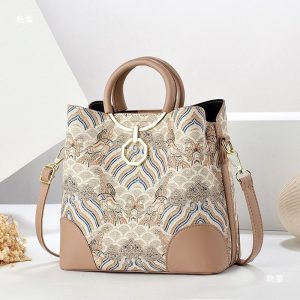Background
For centuries, purple clay teapots have held a revered place in the world of tea, cherished not just as vessels but as partners in the brewing process. Known as Zisha (紫砂) in Chinese, which translates to ‘purple sand,’ these teapots are prized for their unique mineral composition, porous nature, and ability to enhance the flavor and aroma of tea over time. Unlike glazed ceramics or porcelain, purple clay is unglazed, allowing it to interact directly with the tea, absorbing oils and developing a rich patina that tells the story of every brew. This deep connection between material and ritual makes understanding the clay itself essential for any tea enthusiast looking to invest in an authentic piece.
Why It Matters
The primary material used in these teapots is a type of clay found exclusively in the Yixing region of Jiangsu province, China. Mined from deposits deep underground, Yixing clay is actually a collective term for several distinct types, each with its own color, texture, and properties. The most famous is Zini (紫泥), or purple clay, which ranges from light brownish-purple to a deep, rich burgundy. Then there’s Zhuni (朱泥), a rarer, more vibrant red clay known for its higher iron content and delicate, fine texture that results in a sharper, more resonant ring when tapped. Duanmi (段泥), or fortification clay, presents in lighter hues like beige or greenish-yellow due to its mix of purple and green clay, offering excellent heat retention. These variations aren’t just aesthetic; they influence heat conductivity, porosity, and how the teapot ‘seasons’ with use.
According to a recent study published in the Journal of Ceramic Science and Art (2023), the microstructure of Yixing clay contains a high percentage of microscopic pores and iron oxide particles, which contribute to its exceptional thermal stability and ability to soften the tannins in tea, reducing bitterness. This porous nature allows the teapot to absorb trace amounts of tea oils with each use, gradually building an interior layer that enhances flavor complexity and aroma retention in future brews. It’s a living material that evolves, making each teapot uniquely personal to its owner.
When selecting a purple clay teapot, authenticity is paramount. Genuine Yixing clay should feel slightly sandy yet smooth to the touch, with a subtle, natural luster that deepens with use. Beware of teapots that feel overly slick or have a uniform, artificial shine, as these are often made from inferior clay mixed with additives and chemically treated to mimic the appearance of aged Zisha. Weight is another clue; authentic pieces are typically heavier than they look due to the density of the mineral-rich clay, while fakes may feel suspiciously light. Listening for a clear, high-pitched ‘ring’ when gently tapping the lid against the body can also help identify real Yixing clay, which produces a distinct sound compared to the dull thud of imposters.
Caring for your purple clay teapot is straightforward but requires consistency. Never use soap or detergents, as the porous clay will absorb the chemicals and impart them into your tea, ruining the pot’s seasoning. Instead, simply rinse it with hot water after each use and allow it to air dry completely with the lid off to prevent mildew. Over time, the exterior will develop a beautiful patina from hand oils and tea spills, which many collectors cherish as a sign of a well-loved pot. For deep cleaning, some enthusiasts gently scrub the interior with a soft brush and used tea leaves, which help maintain the built-up layer without introducing foreign flavors.
The benefits of brewing with purple clay are numerous and well-documented by tea masters. The clay’s natural porosity allows it to ‘breathe,’ maintaining optimal heat during brewing without scalding the leaves, which helps extract nuanced flavors without bitterness. It also retains heat exceptionally well, keeping your tea warmer for longer compared to glass or porcelain. Perhaps most uniquely, a seasoned Yixing teapot is said to improve the taste of tea so significantly that some devotees dedicate specific pots to specific tea types—like one for oolong and another for pu-erh—to avoid cross-contamination of flavors and fully appreciate each variety’s distinct character.
In the end, a purple clay teapot is more than a tool; it’s an investment in tradition, craftsmanship, and the art of tea itself. Whether you’re drawn to the deep hues of Zini, the vibrant red of Zhuni, or the earthy tones of Duanmi, understanding the material empowers you to choose a piece that will serve you—and your tea—beautifully for generations. As you embark on your journey with Zisha, remember that patience and care are key; let the clay teach you its rhythms, and you’ll be rewarded with countless perfect cups.
You May Also Like
- handmade-tote-ethnic-boho-large-capacity-shoulder-bag/" class="woocommerce-LoopProduct-link woocommerce-loop-product__link">Add to cart


Guangxi Zhuang Brocade Handmade Tote – Ethnic Boho Large-Capacity Shoulder Bag
Original price was: $172.00.$150.00Current price is: $150.00. Add to cart Ancient Craftsmanship & ICH Herbal Beads Bracelet with Yellow Citrine & Silver Filigree Cloud-Patterned Luck-Boosting Beads
Original price was: $128.00.$89.00Current price is: $89.00. Add to cartHandwoven Zhuang Brocade Tote Bag – Large-Capacity Boho Shoulder Bag
Original price was: $178.00.$154.00Current price is: $154.00. Add to cartThe Palace Museum Paper-Cut Light Art Fridge Magnets: Chinese Cultural Style Creative Gift Series
Price range: $27.00 through $36.00 Select options This product has multiple variants. The options may be chosen on the product page






